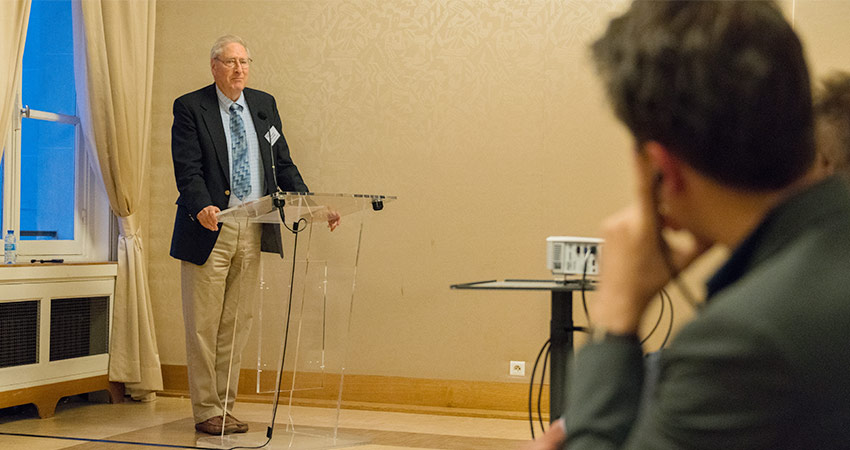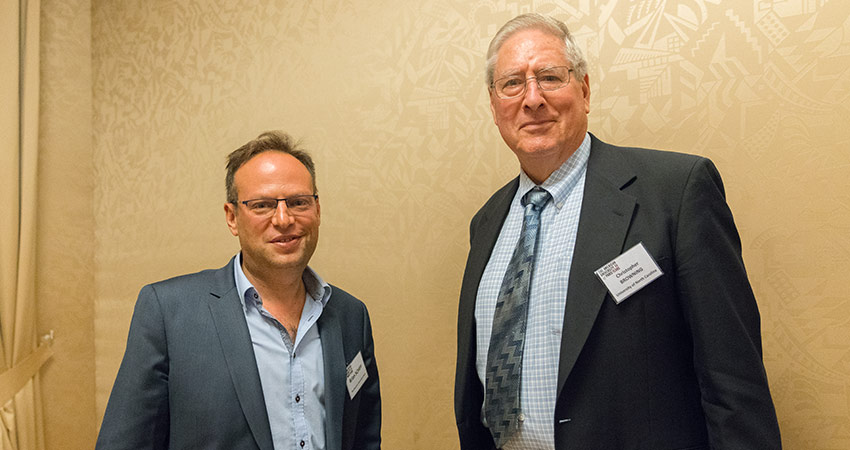- About AUP
- History of AUP
- Mission & Core Values
- Vision and Leadership
- AUP Recognition
- Alumni Success
- Campus Development
- Arts at AUP
- Policies & Guidelines
- Academics
- Undergraduate
- Graduate Programs
- MA in Diplomacy and International Law
- MA in Global Communications
- MSc in Human Rights and Data Science
- MA in International Affairs
- MA in International Affairs, Conflict Resolution, and Civil Society Development
- MSc in International Management
- MSc in Strategic Brand Management
- Find Your Thesis Advisor
- Previous Programs
- Cultural Program
- Faculty
- Summer School
- Research Centers
- The Center for Critical Democracy Studies
- Upcoming Events
- Research Projects
- Fellows’ Publications
- Publishing
- Curriculum
- Community
- Partnerships
- Visiting Scholars
- CCDS Highlights
- Atelier de Théorie Politique – Paris
- Critical Theory 101: Future Directions and New Challenges
- Martti Koskenniemi on “The Law of International Society: A Road not Taken”
- Academic Freedom Symposium
- Tocqueville Colloque 2023
- Violent Turns Conference
- Degenerations of Democracy
- DEMOS21 Inaugural Event
- What Demos for the 21st Century?
- The Paris Centennial Conference
- Justice Stephen Breyer
- Civic Jazz - The Launch of the Center
- Past Events
- FR
- The Center for Writers and Translators
- The George and Irina Schaeffer Center for the Study of Genocide, Human Rights and Conflict Prevention
- The Joy and Edward Frieman Environmental Science Center
- The Center for Media, Communication & Global Change
- The Center for Critical Democracy Studies
- Departments
- Academic Resources
- Academic Affairs
- Academic Calendar
- Academic Resource Center
- Library
- Registrar's Office
- Teaching and Learning Center
- Accessibility & Accommodation Services
- AI@AUP: A Campus-Level Initiative
- Quai D'Orsay Learning Commons
- Paris as Classroom
- ACE
- Admissions
- Student Life
- Campus
- Student Leadership & Involvement
- Paris
- Support Services
- Student Life Help Desk
- Student Accounting Services
- Student Immigration Services
- Student Grievance Procedure
- Diversity and Inclusion
- Health & Well-being
- Digital Student Handbook
- News
- Events
- AUP Giving
- Housing Offer for 2025-2026
- IT Services
- Alumni
- About AUP
- History of AUP
- Mission & Core Values
- Vision and Leadership
- AUP Recognition
- Alumni Success
- Campus Development
- Arts at AUP
- Policies & Guidelines
- Academics
- Undergraduate
- Graduate Programs
- MA in Diplomacy and International Law
- MA in Global Communications
- MSc in Human Rights and Data Science
- MA in International Affairs
- MA in International Affairs, Conflict Resolution, and Civil Society Development
- MSc in International Management
- MSc in Strategic Brand Management
- Find Your Thesis Advisor
- Previous Programs
- Cultural Program
- Faculty
- Summer School
- Research Centers
- The Center for Critical Democracy Studies
- Upcoming Events
- Research Projects
- Fellows’ Publications
- Publishing
- Curriculum
- Community
- Partnerships
- Visiting Scholars
- CCDS Highlights
- Atelier de Théorie Politique – Paris
- Critical Theory 101: Future Directions and New Challenges
- Martti Koskenniemi on “The Law of International Society: A Road not Taken”
- Academic Freedom Symposium
- Tocqueville Colloque 2023
- Violent Turns Conference
- Degenerations of Democracy
- DEMOS21 Inaugural Event
- What Demos for the 21st Century?
- The Paris Centennial Conference
- Justice Stephen Breyer
- Civic Jazz - The Launch of the Center
- Past Events
- FR
- The Center for Writers and Translators
- The George and Irina Schaeffer Center for the Study of Genocide, Human Rights and Conflict Prevention
- The Joy and Edward Frieman Environmental Science Center
- The Center for Media, Communication & Global Change
- The Center for Critical Democracy Studies
- Departments
- Academic Resources
- Academic Affairs
- Academic Calendar
- Academic Resource Center
- Library
- Registrar's Office
- Teaching and Learning Center
- Accessibility & Accommodation Services
- AI@AUP: A Campus-Level Initiative
- Quai D'Orsay Learning Commons
- Paris as Classroom
- ACE
- Admissions
- Student Life
- Campus
- Student Leadership & Involvement
- Paris
- Support Services
- Student Life Help Desk
- Student Accounting Services
- Student Immigration Services
- Student Grievance Procedure
- Diversity and Inclusion
- Health & Well-being
- Digital Student Handbook
- News
- Events
- AUP Giving
- Housing Offer for 2025-2026
- IT Services
- Alumni
On October 26, 2017, Dr. Christopher Browning, Professor Emeritus of History at the University of North Carolina, was invited by the George and Irina Schaeffer Center for the Study of Genocide, Human Rights and Conflict Prevention to speak about his latest work: Remembering Survival: Inside a Nazi Slave Labor Camp. Dr. Browning’s research focuses on Nazi Germany and the Holocaust and he has written extensively about three issues: Nazi decision- and policy-making in regard to the origins of the Final Solution; the behavior and motives of various middle- and lower-echelon personnel involved in implementing Nazi Jewish policy; and the use of survivor testimony to explore Jewish responses and survival strategies. In his talk, Dr. Browning focused on the use of testimonies in reconstructing history.
Dr. Browning began his talk recounting the Case of Walter Becker in Germany. Becker had been responsible for liquidating a Jewish ghetto, sending nearly 4,000 Jews to their deaths at Treblinka and 1,600 to slave-labor factories. However, of all the evidence available to a court system – including physical, documentary and circumstantial evidence – eyewitness testimony was considered the least reliable. This was problematic because, as Dr. Browning reports, the judge in the Becker case ruled that for “any eyewitness to be reliable, that person had to be ‘disinterested, indifferent, attentive, intelligent, and distanced.’” Thus, all the survivors who had come to testify in his courtroom were “bad witnesses”and the judge dismissed their accounts out of hand. Shockingly, despite the numerous eyewitness testimonies, Becker was acquitted.
Though the Becker Case brought to Dr. Browning’s attention the use of eyewitness testimony, by the time he started working on his book, the case was no longer the singular focus of his attention. By the 1990s, Dr. Browning found that the concept of the “slave labor” camp was not adequately researched. There were over 42,000 places of interment for Nazi Germany, of which about 30,000 were set-up by private companies who “rented” Jewish slaves for a “per-head, per-day price.” There is very little in terms of a paper-trail as Corporate Germany did not keep records like the S.S. did. Therefore, the “survivor story,” Browning argues, is of absolute importance in constructing the history of these types of slave camps.
Over the ensuing decades after liberation there has been a rash of different types of testimonies. These have included some of the valuable, detail-rich testimonies collected immediately after the war, testimonies collected by the German state in the 1960s, the unstructured testimonies of the 1980s – the first testimonies filmed on camera – and then the more structured interviews of the 1990s. From 2000-05, Dr. Browning personally conducted 15 interviews with survivors. Because he had the benefit of having previous testimonies from most interviewees (14 of the 15), he was able to conduct these interviews with invaluable prior knowledge. This allowed for him to make his interviews as detailed and conversational as possible. Like this, he says, he was able to “invite them [the survivors] to open the conversation.”
Browning’s use of his personal interviews are, he confesses, “disproportionately important to the construction” of Remembering Survival. Problematically, during the course of writing this book, he found that he had to challenge the evidence presented by the interviewees. He had to consider the “accuracy and authenticity” of the testimonies given to him, particularly as he used these testimonies as evidence to reconstruct the events of Starachowice.
“Many testimonies, multiple perspectives can be enriching and give a fuller sense of history. However, when there are incompatible accounts that can’t be reconciled, what can a historian do? That’s when judgement must be made with all of the evidence at hand.”
Dr. Browning finished his talk discussing “hidden memory,” and the “layers of memory one has to excavate through when looking through a body of this much testimony.”
“In the end,” he finds, “survivor testimony has its problems. It’s not something we can use uncritically. But it’s something that we can’t afford not to use.”


